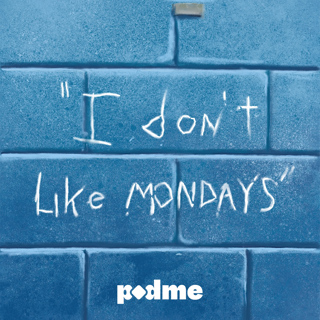
Smiling Buddha: India's First Nuclear Test
The inside story of how India secretly developed and exploded an atomic device in 1974. India called it a Peaceful Nuclear Explosion, though the experimental device was in effect a plutonium bomb. The test was seen as a triumph of Indian science and technology, but it led to the suspension of international nuclear co-operation with India, and spurred Pakistan to speed up development of its own nuclear bomb. Alex Last spoke to S.K Sikka, one of India's leading nuclear scientists, about his role in the secret project, code-named Smiling Buddha.Photo: A crater marks the site of the first Indian underground nuclear test conducted 18 May 1974 at Pokhran in the desert state of Rajasthan. (PUNJAB PHOTO/AFP/Getty Images)
11 Heinä 20189min

Chinua Achebe's Things Fall Apart
In 1958 Nigerian writer, Chinua Achebe, published his first book "Things Fall Apart". It was set in pre-colonial rural Nigeria and examines how the arrival of foreigners led to tensions within traditional Igbo society. The book revolutionised African writing, and began a whole new genre of world literature. In 2016 Rebecca Kesby spoke to Achebe's youngest daughter, Nwando Achebe.(Photo: Chinua Achebe in 2002. Photo Credit: Reuters/Ralph Orlowski/Files )
10 Heinä 20189min

Kosovo: 'Madeleine's War'
When war broke out in Kosovo in 1998, Nato intervened with air-strikes. US Secretary of State Madeleine Albright was the main proponent for military action. She explains to Rebecca Kesby why she argued for action, and tells her own remarkable story, from a childhood in Czechoslovakia to the highest political office ever held by a woman in the United States at the time. (Photo: Madeleine Albright. Credit US Government)
5 Heinä 201810min

Playgrounds Made of Junk
Post-war Britain saw a rise in makeshift adventure playgrounds born out of bomb sites. Children were provided with tools and raw materials, to build whatever they wanted to play with, using their own imagination. Anya Dorodeyko spoke to Tony Chilton, an early "playworker" and champion of adventure playgrounds in the UK about their boom in the 1970s.Picture: children playing on an adventure playground in London in the 1970s (Credit: BBC)
5 Heinä 20189min

The Toilet
A controversial installation by Russian conceptual artists Ilya and Emilia Kabakov offended Russians in 1992, but is now seen as a masterpiece. Emilia Kabakov told Dina Newman that The Toilet is "a metaphor for life." Photo: The Toilet, a model; credit: Kabakov archive
4 Heinä 20189min

Flight 655: When The US Shot Down An Airliner
On 3 July 1988, a US Navy warship, the USS Vincennes, shot down an Iranian civilian airliner over the Persian Gulf. All 290 on board the aircraft were killed, among them 66 children. The plane was flying a scheduled service from Bandar Abbas in Iran to Dubai but was mistakenly identified as "hostile" by the US ship. Alex Last has been hearing a rare first-hand account from Rudy Pahoyo, a former US Navy Combat Cameraman who happened to be filming on the USS Vincennes that day. Photo: The USS Vincennes fires a surface to air missile towards Iran Air flight 655 on 3 July 1988 (Rudy Pahoyo)
3 Heinä 20189min

The Search For Deep Throat
In July 2005, the identity of one of the most famous informants in American political history was revealed. Deep Throat leaked details of President Nixon's Watergate cover-up to the Washington Post leading eventually to the president's resignation. He was former assistant director at the FBI, Mark Felt. Louise Hidalgo has been talking to the lawyer who helped persuade the elderly Mark Felt to go public after 30 years of silence and speculation.Picture: Bob Woodward (left) and Carl Bernstein, the Washington Post reporters who broke the Watergate story, at their desk, 29th April 1973. They nicknamed their anonymous source Deep Throat. (Credit: Getty Images)
2 Heinä 20189min

The President and the Gun Lobby
Former President George Bush Senior gave up his lifetime membership of the country's most powerful gun-lobby, the NRA, in 1995. Claire Bowes has been speaking to his speechwriter, Jim McGrath, to find out why the 41st President turned his back on the National Rifle Association, a body so closely associated with political power.Photo: Portrait Of President George Herbert Walker Bush in 1991 (credit: Bachrach/Getty Images)
29 Kesä 20189min





















